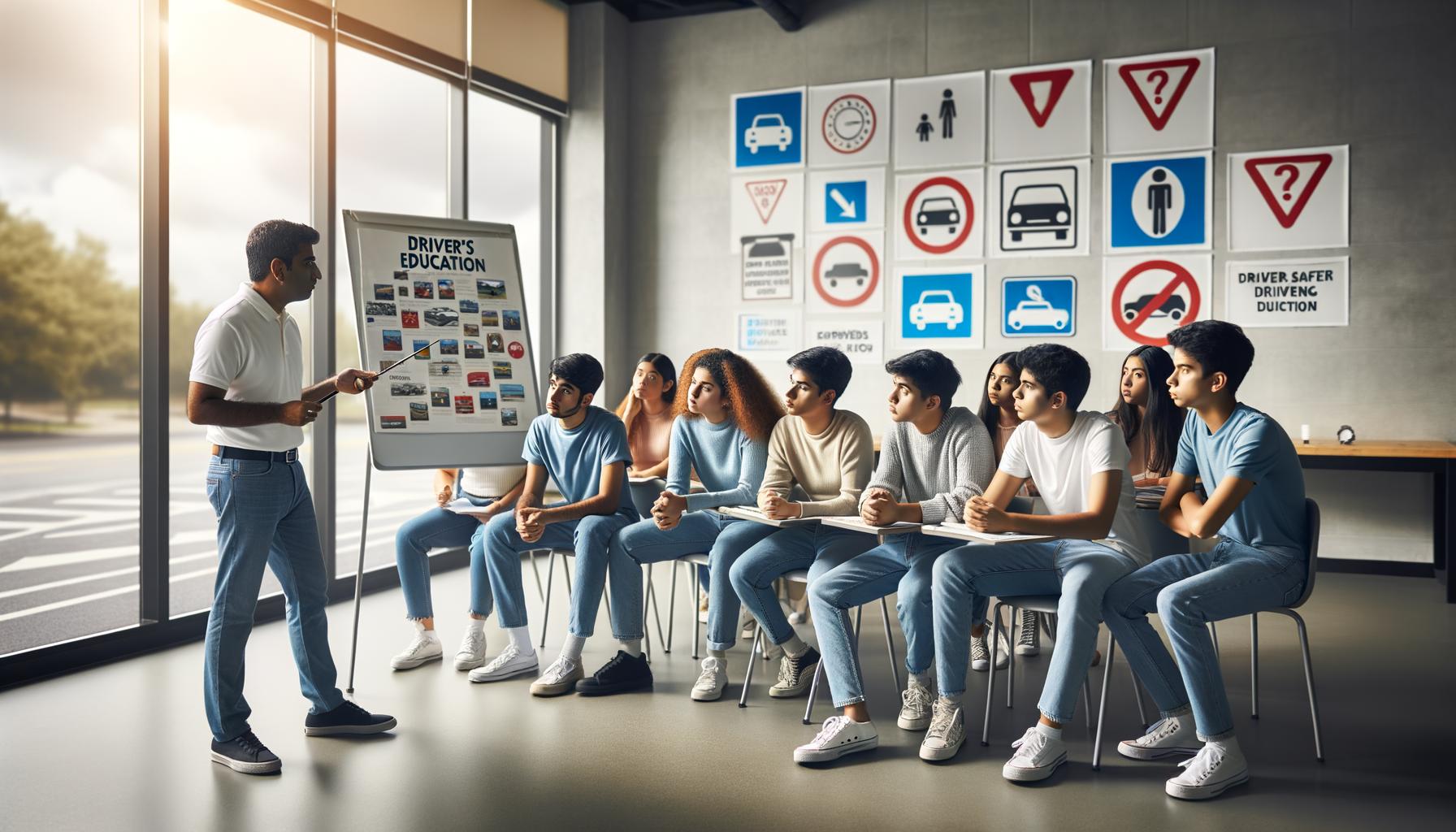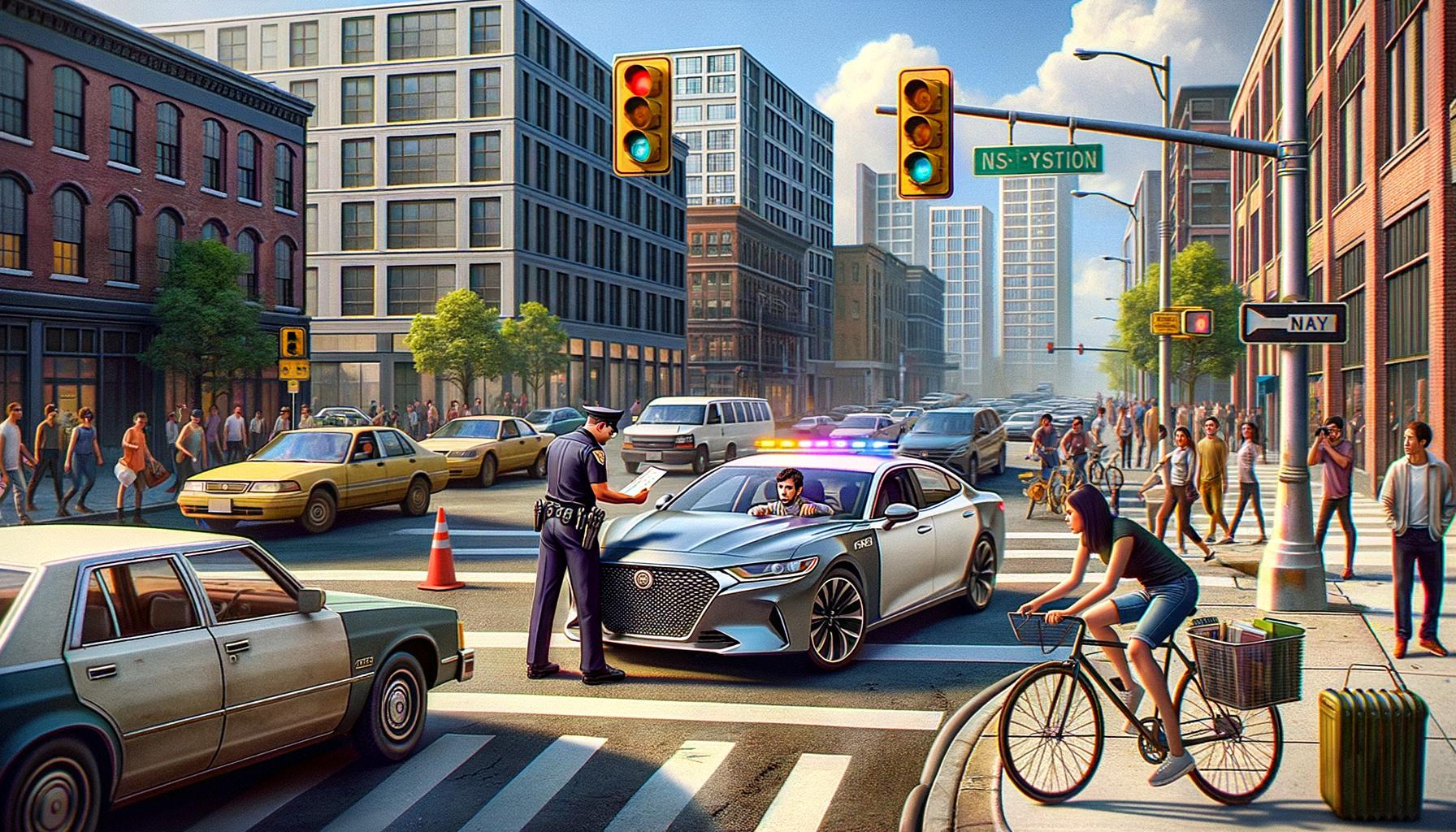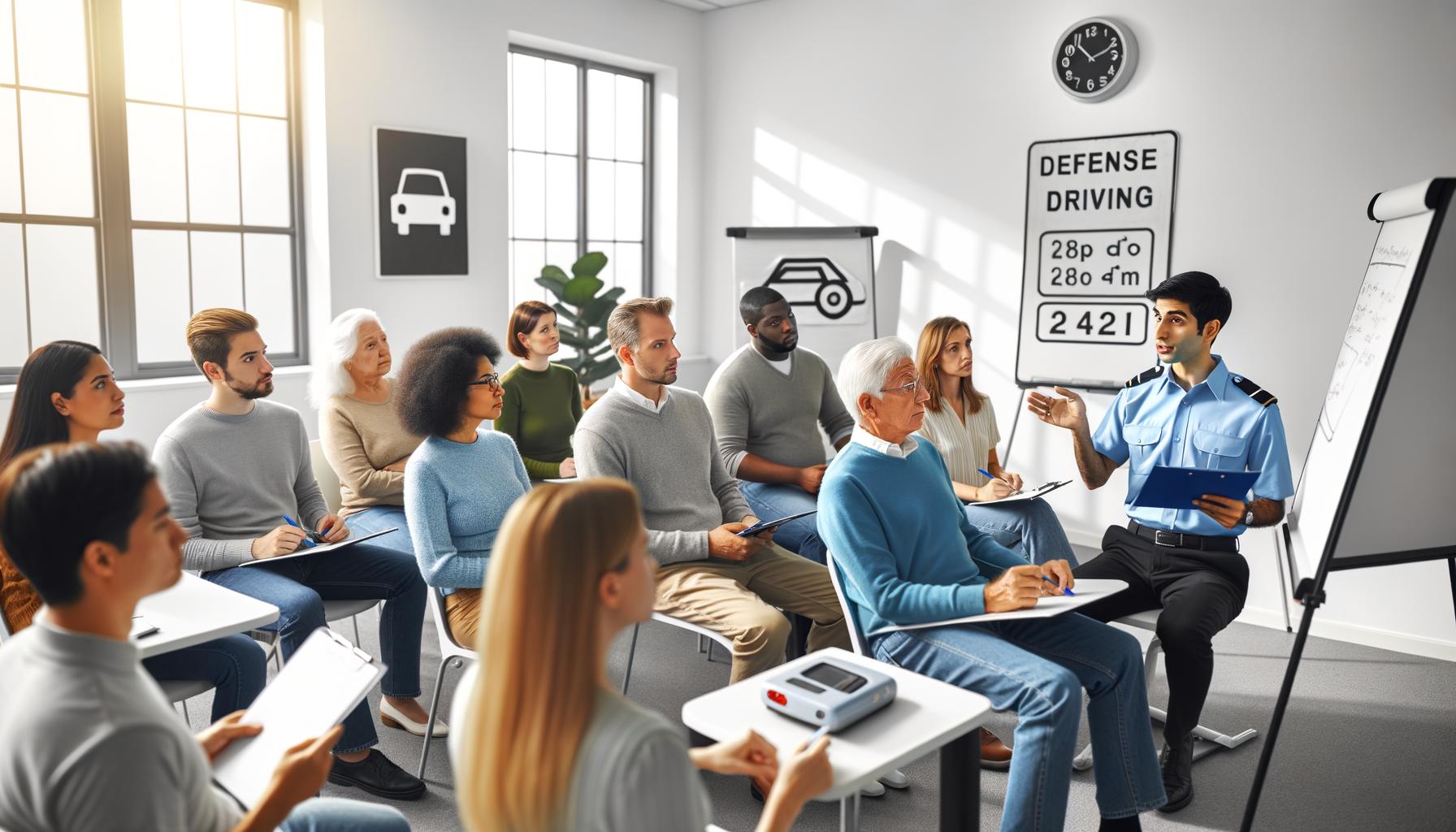Teen Driver Insurance Discounts [Guide]
Teen driver insurance can be surprisingly expensive, but there are multiple ways to save.
Many companies offer discounts that can significantly reduce premiums for young drivers.
At The Wiser Driver Driving School, we believe knowledge is power. This guide will outline key discounts and strategies to make teen driver insurance more affordable.
What Discounts Are Available?
There are several practical ways to reduce insurance premiums for teen drivers. Understanding these common discounts can offer significant savings.
Good Student Discounts
One of the most effective ways to reduce insurance costs for teenagers is by leveraging their academic performance. Insurers like Geico, State Farm, and Allstate often offer good student discounts. Typically, teens maintaining at least a B average can save an average of $283 annually. Encouraging academic excellence not only prepares teens for the future but also makes their present driving costs more manageable.
Driver’s Education Discounts
Completing a state-approved driver’s education course is another way to unlock savings. These courses educate teens about safe driving practices and reduce their risk profile. Insurance companies like Progressive and Nationwide provide discounts for teens who have completed these programs. A study from the CDC indicates that driver’s education can lower the risk of crashes by 12%. Enrolling in such programs can be a smart financial move.
Safe Driving Programs
Safe driving programs or telematics programs monitor driving behaviors through apps or devices installed in the car. Companies like Allstate and Progressive offer these programs, which can provide significant discounts based on safe driving habits. Usage-based insurance options can yield savings of around 10-20%, and installing a telematics device could save another $172 on average. By promoting and monitoring safe driving habits, not only are premiums reduced, but overall road safety is improved.

Through these strategic discounts—good student, driver’s education, and safe driving programs—families can make teen car insurance more affordable. If you want to read more about safe driving techniques, this practical guide can provide additional insights.
Additional Insurance Savings
Usage-based insurance programs are a modern way to save on teen driver insurance. These programs assess real-time driving behaviors using telematics devices or apps, allowing insurers to tailor premiums based on a driver’s habits. For instance, companies like Allstate and Progressive offer such programs, which can result in savings of 10-20%. These devices monitor factors like speed, braking, and mileage. If your teen is a safe driver, this can be a significant way to cut costs.
Multi-Car Policies
If your household already insures more than one vehicle, adding a teen driver to an existing multi-car policy can lead to discounts. Most insurance companies offer reduced rates when multiple cars are insured under the same policy. On average, bundling vehicles can save families between 10-25%. This is particularly cost-effective compared to insuring a teen under a separate policy, which can be substantially more expensive.
Bundling Home and Auto Insurance
Bundling home and auto insurance with the same provider is another effective strategy. Insurers often provide sizeable discounts when you combine these policies. Families can save an average of 5-15% by consolidating their home and auto insurance. Moreover, some providers might offer additional incentives or lower deductibles for bundled coverage. If you’re looking for ways to optimize these savings, consulting with an independent insurance agent could be helpful. They can navigate through various options tailored to your needs.

Combining these discount strategies can lead to significant savings on teen driver insurance. For more detailed insights on safe driving practices, you might find this defensive driving guide beneficial.
How to Maintain Affordable Rates
Maintain a Clean Driving Record
A spotless driving record can be a significant factor in keeping insurance premiums low. Insurance companies closely monitor traffic violations and at-fault accidents. A single speeding ticket can increase rates by 20-30%, while a serious offense like a DUI can double rates. Practicing defensive driving techniques, such as those outlined in this guide, can help teens maintain their records. Staying accident-free for three to five years often leads to “good driver” discounts, which can save hundreds annually.
Choose a Safe and Reliable Vehicle
The type of vehicle driven plays a crucial role in setting insurance premiums. Safer, reliable cars tend to have lower rates. For example, a used car with advanced safety features like anti-lock brakes, airbags, and electronic stability control can reduce premiums by 10-20%. Opting for vehicles with high safety ratings from the IIHS or NHTSA can further cut costs. Additionally, avoiding sports cars and high-performance vehicles is wise, as these often come with higher premiums due to their association with riskier driving behaviors.
Review and Compare Insurance Options
Insurance rates can vary significantly from one provider to another, making it essential to regularly review and compare options. Request quotes from multiple carriers at least once a year. Using comparison tools and consulting with independent insurance agents can help identify the best deals. It’s not uncommon to find a 5-10% difference in premiums for similar coverage. Also, taking advantage of policy reviews can ensure you’re receiving all applicable discounts. For instance, checking eligibility for new discounts such as telematics programs can lead to additional savings.

Conclusion
Overall, there are multiple effective ways to make teen driver insurance more affordable. Good student discounts, safe driving programs, and bundling are just a few strategies that offer significant savings. Encouraging your teen to maintain a good academic record and complete a driver’s education course are practical steps toward cost reduction. Safe driving habits monitored through telematics can also lead to lower premiums and safer roads.

Safety and responsibility in driving should always be a priority. A clean driving record not only keeps insurance rates down but also ensures the well-being of everyone on the road. Vehicles with high safety ratings further help in reducing insurance costs while providing added protection.
Exploring the available discount options is essential. Comparing different insurance providers and utilizing tools and services can lead to better rates. The right combination of discounts and safe driving practices can result in substantial financial benefits.
We at The Wiser Driver Driving School offer comprehensive programs to help you drive safely and confidently. To learn more about our services and how we can help you become a skilled driver, visit The Wiser Driver.
By taking advantage of these strategies and focusing on safe driving, you can make teen driver insurance more manageable and cost-effective. For additional insights on defensive driving, check out this guide for practical tips.




























































![Key Takeaways - Night Driving Safety Tips [Pro Tips]](https://thewiserdriver.com/wp-content/uploads/2024/05/Night_Driving_Safety_Tips__Pro_Tips__6_2024_05_22_07_08_20_467745_00_00.png)

